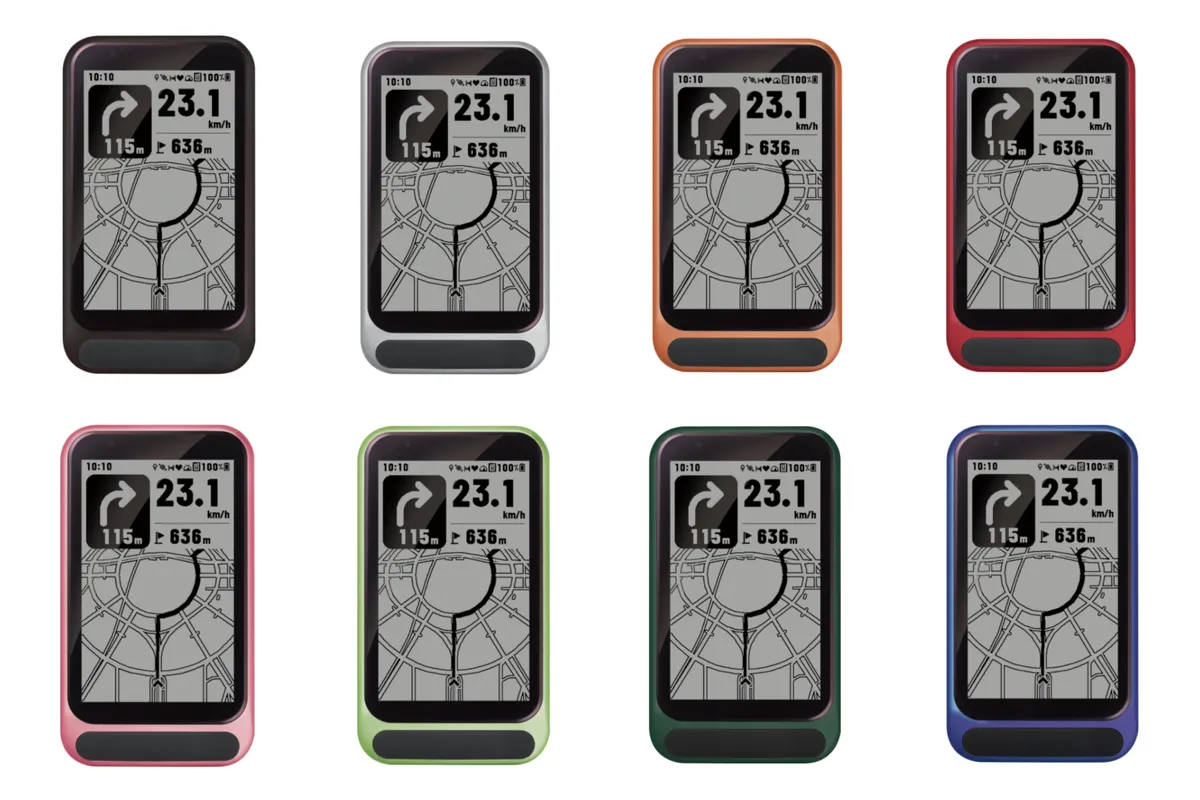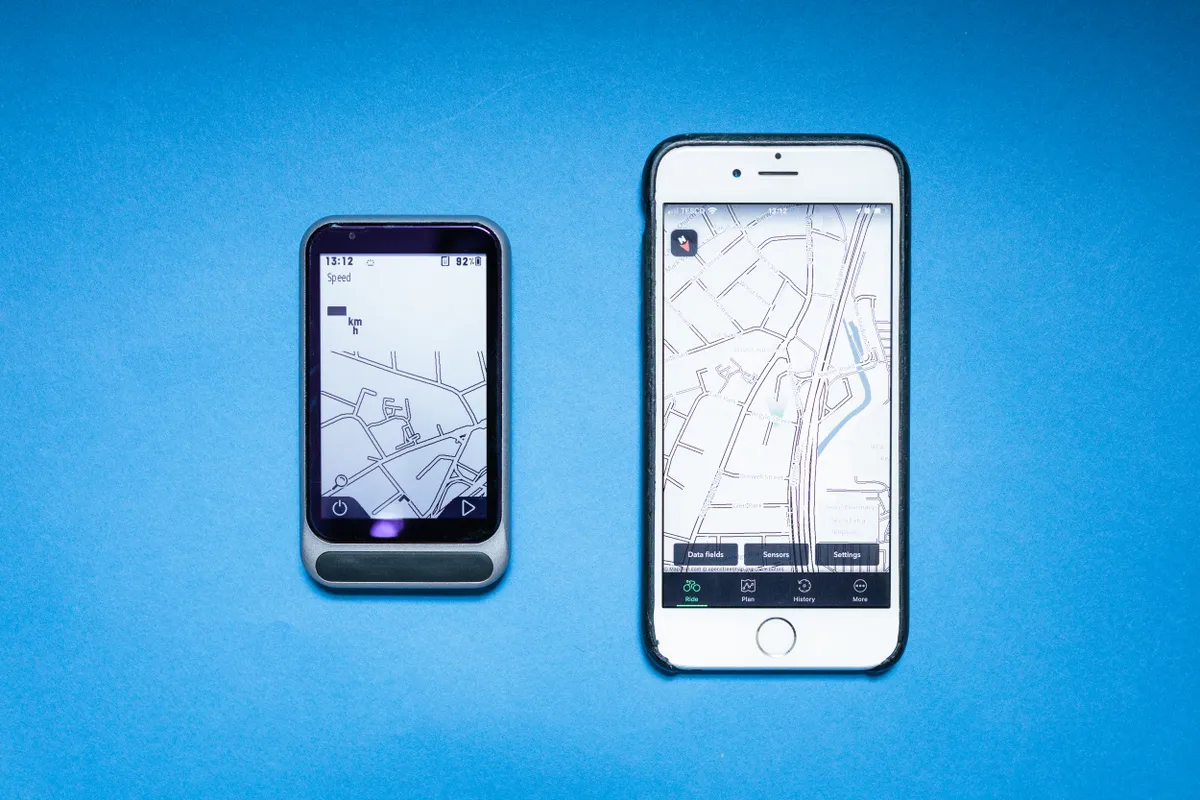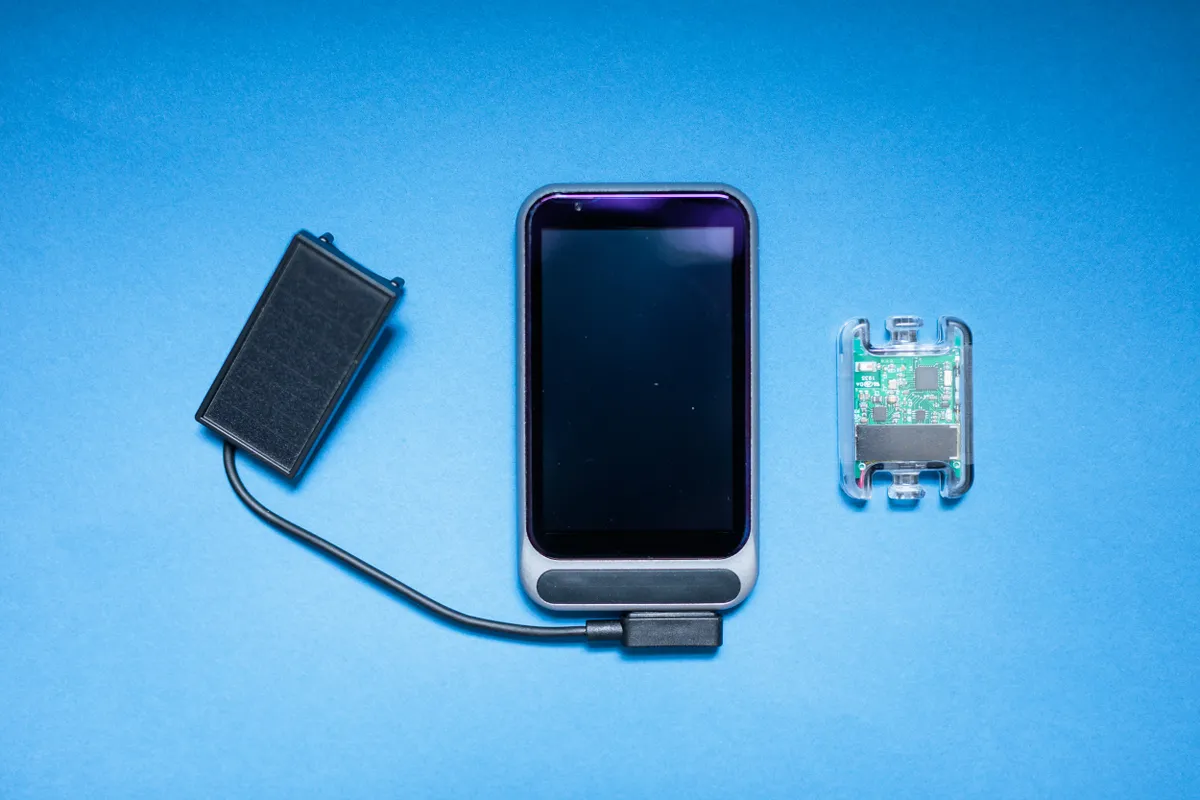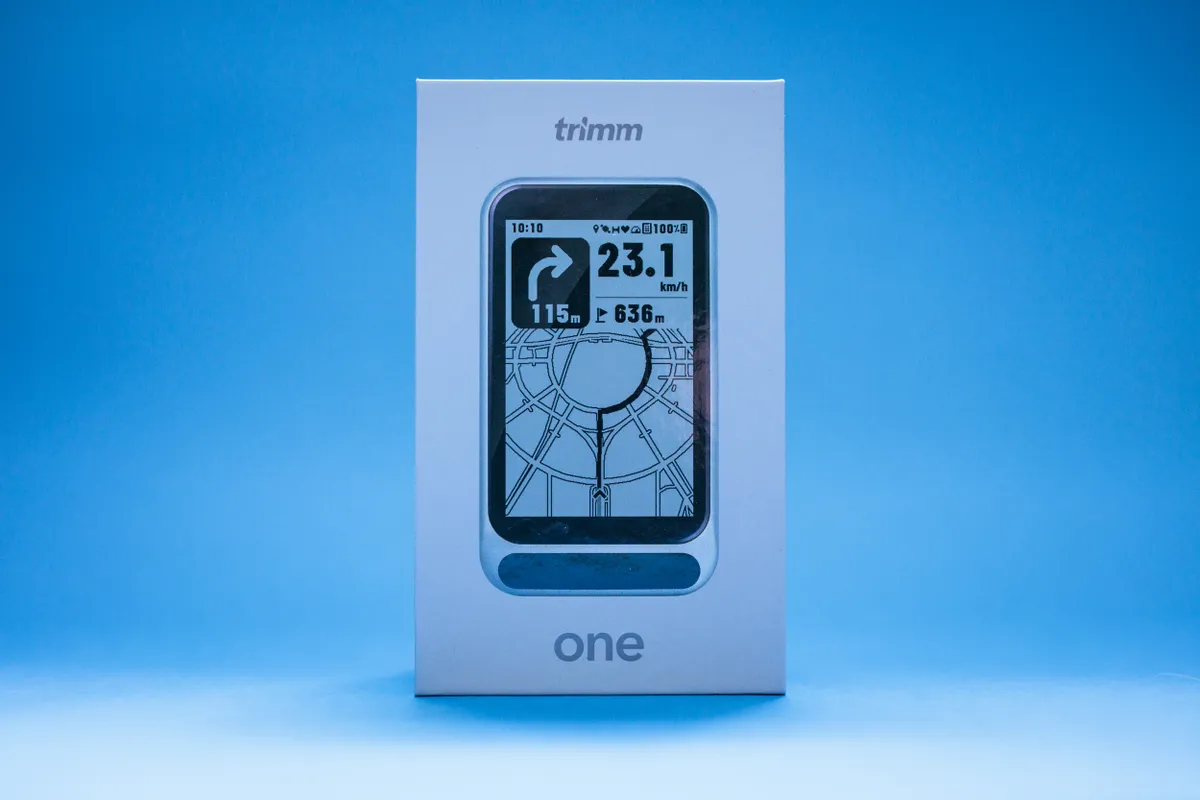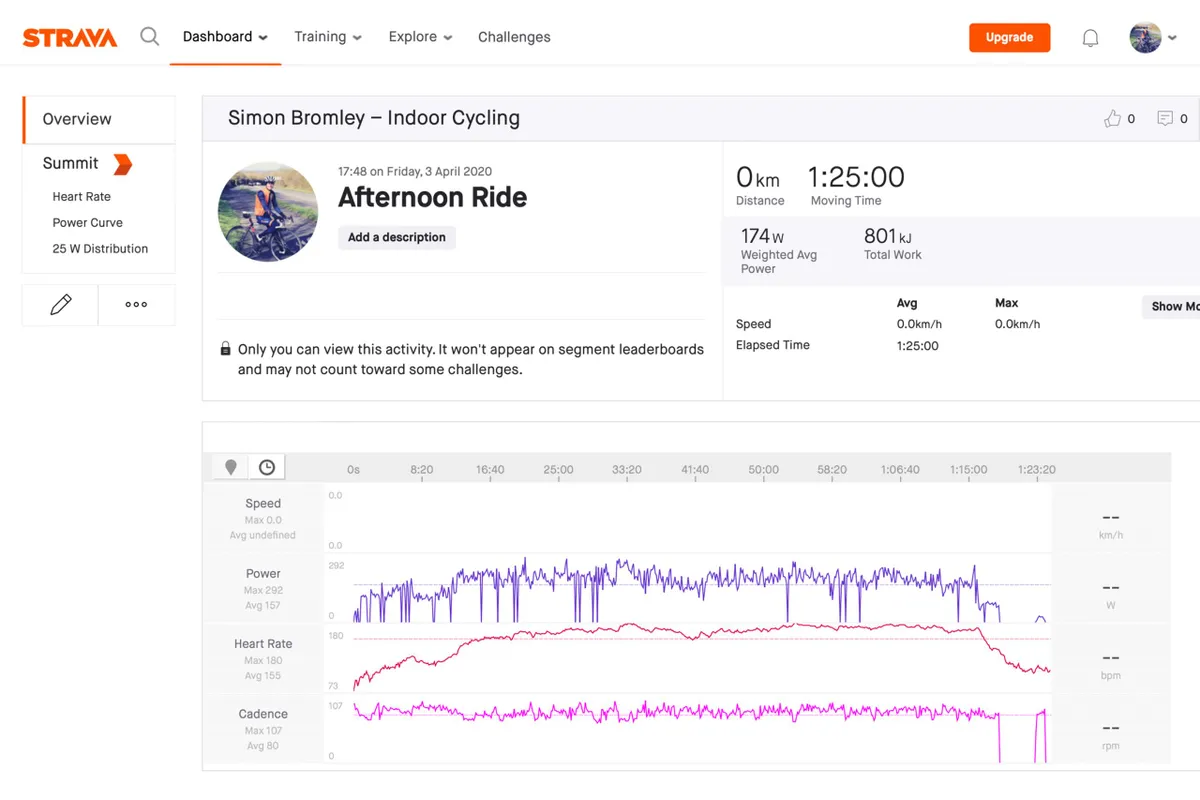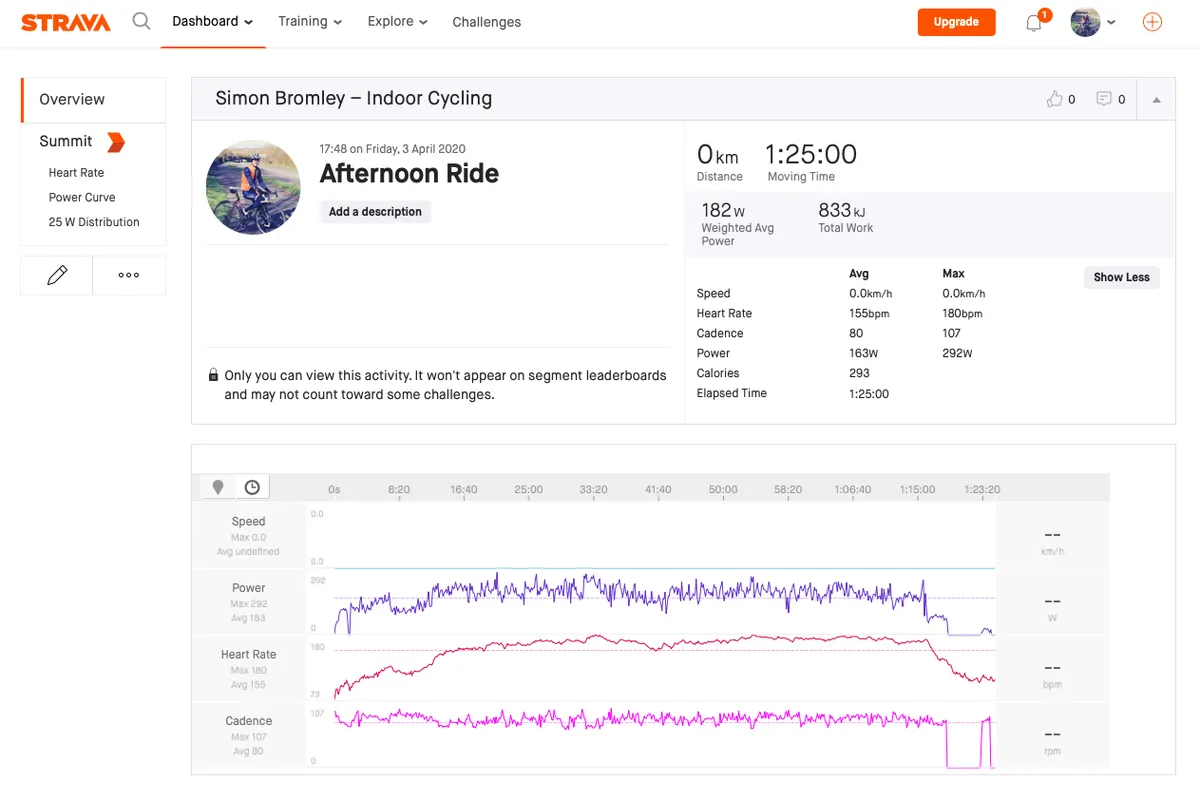The One is a new GPS cycle computer from Korean brand Trimm that hopes to challenge established players in the market such as Garmin and Wahoo.
Having been in development for more than three years, the One’s most obvious distinguishing feature is its sleek, smartphone-esque looks.
There are eight different colours available and it looks somewhat like a cross between an early iPhone and an iPod Mini.
At 55 x 94 x 12.5mm, it’s similar in size to a Garmin Edge 810, (albeit a little slimmer) and weighs 63g.
With its anodised aluminium frame and curved Gorilla Glass display, it’s a slimmer and more modernist design than we’re used to with cycling-specific GPS computers.
It looks much more like a piece of contemporary consumer tech, rather than a piece of rugged kit for riding, so how does it stand up against the best cycling computers already out there?
Intended primarily to meet the needs of touring cyclists, and looks aside, the Trimm One's key selling points are smartphone integration and a 15-hour claimed battery life – that can theoretically be made unlimited through the use of ‘smart battery management’ and a couple of optional accessories.
The first is an external speed sensor, which mounts to a hub and uses accelerometers to measure the speed at which you're travelling. Trimm claims this accessory alone helps extend the battery life to 30 hours, or up to 50 hours when the One is also paired to a smartphone.
Trimm hasn’t revealed exactly how this works, but we suspect it may switch to a lower sample rate for GPS data on the device and uses your phone's GPS signal to fill in the gaps.
The second and arguably more interesting accessory is a small solar charging panel, which can charge the One as your ride.
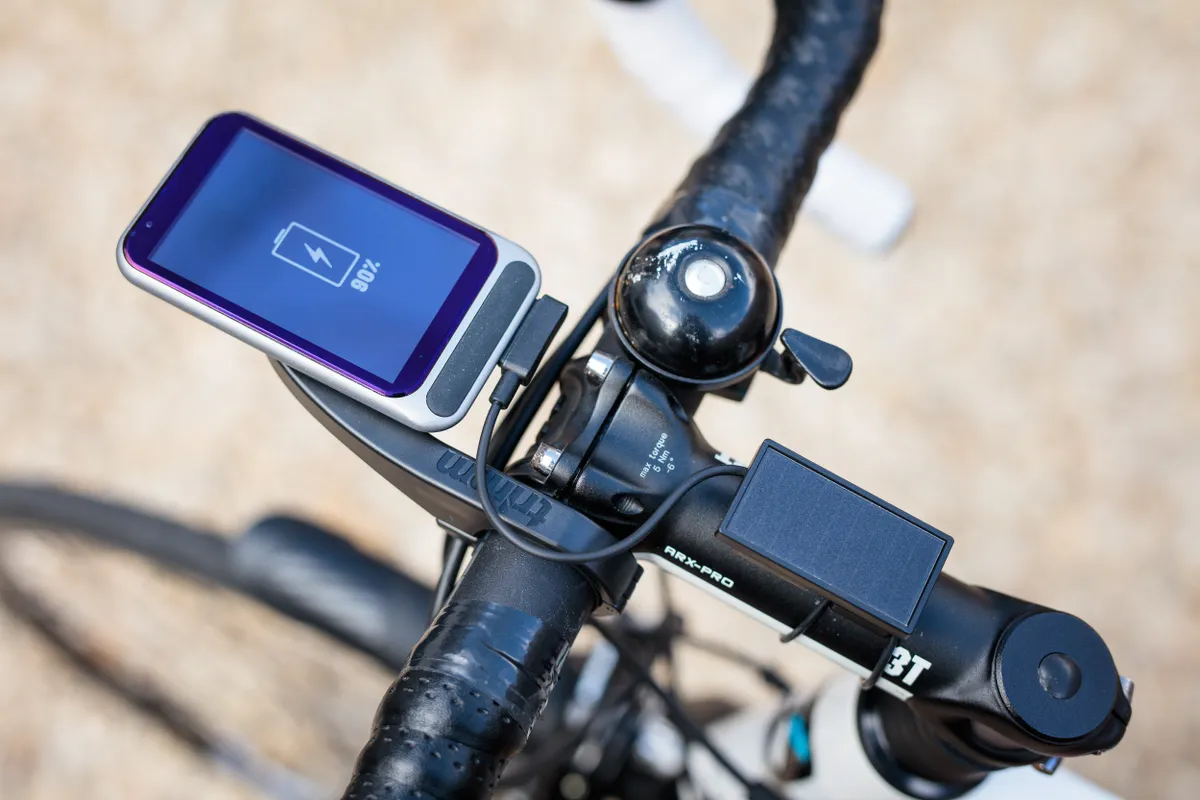
Trimm claims that, if used in combination with a smartphone, its own speed sensor and favourable weather, battery life can potentially be extended almost indefinitely.
The Trimm One costs $299 with the solar charging panel included, or $329 with both the solar charging panel and speed sensor.
Trimm also says the One will work with any Bluetooth or ANT compatible speed sensor, if you already own one.
Trimm One initial impressions
As we've already noted, the Trimm One looks very much like a smartphone. Sadly, though, it doesn’t operate like one. For a start, it doesn’t have a touchscreen.
Trimm says it deemed a high-contrast monochrome screen to be more useful for a touring cyclist than a touchscreen. The simpler screen also improves battery life.
It also told us the One is water resistant but it hasn't received a formal IPX rating yet, so you might need to be careful about dropping it in puddles.
Additionally, the large button across the front is actually split into three separate buttons. These buttons are not physically labelled and, consequently, using the device for the first time is a little confusing.
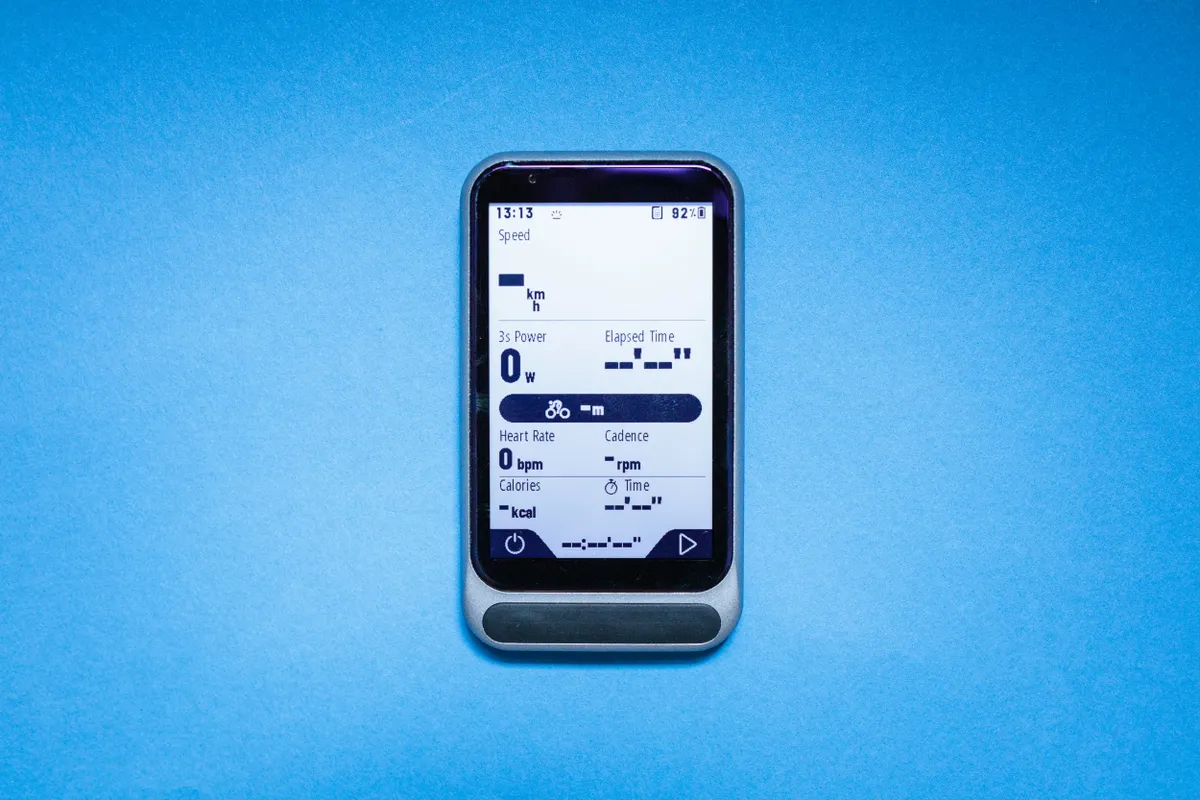
I had to read the included instructions carefully to find out how to operate the unit, which might seem an odd complaint but is a little disappointing in an age of intuitive tech.
It’s not unreasonable to have to read an instruction manual to understand a device fully, but its basic functions should be simple enough that anyone can use it without having to refer to a manual.
Fortunately, the instructions aren’t lengthy because the functionality of the device itself is actually very limited. Instead, the One is reliant on smartphone integration to function.
In fact, on the current firmware it’s not possible to do anything on the unit itself other than turning it on/off, starting/stopping the recording of ride and switching pages. Everything else – routing, connecting external devices, customising data fields, etc – is done via the Trimm Cycling app.
The One does have a built-in altimeter and GPS functionality, so you can record rides without a connected smartphone, but it has very little internal storage. When used without a smartphone, Trimm says the One can only store 16 rides on its internal memory.
On top of that, all rides except the most recent one will be summarised if you don't synchronise the One to the Trimm Cycling app after each ride. This means detailed ride data is discarded and ride info is reduced to a sample of 100 GPS points and averages for power, heart rate and cadence.
Similar to other GPS devices that rely on smartphone integration (such as Wahoo’s Elemnt Bolt and Roam), you’ll miss out on navigation and any ability to customise the device pages too.
It’s worth noting you can pre-load a GPX track onto the Wahoo devices if you need navigation without a phone connection though, which isn’t possible on the One.
For most people this probably won’t be an issue, given practically everyone carries a smartphone with them at all times these days, but it could be an issue for those without a smartphone or those who like to ride without one.
It’s a niche concern, but I occasionally use GPX tracks of time-trial routes to help make sure I stay on course during races (when it’s not simply up a dual carriageway and back).

Beyond ride recording, navigation and page customisation there’s actually not much more to the Trimm app.
For example, even with a smartphone paired the One doesn’t have features such as different activity profiles, workouts, data recording options, smart trainer control, Strava Live segments, or integration with apps such as Komoot.
Trimm also said it was considering adding more functionality to the One and the Trimm Cycling app, but currently there isn’t a specific timeline for that.
At $299 it’s also significantly more expensive than, for example, the well established and highly-rated Wahoo Elemnt Bolt and Garmin 530, but has a considerably smaller feature set.
An argument could be made that the One’s feature-set is streamlined to prioritise what most cyclists actually use on a regular basis, but it’s hard to shake the feeling you might be paying more for less.
Firmware updates
Start up time is reasonably quick in most circumstances, with the One turning on and connecting to a synced smartphone in under five seconds, in my experience. Without a smartphone, you have to wait about 20 seconds while it searches for one until it prompts you to select 'standalone'.
It can get delayed if the firmware needs to be updated though.
If new firmware is available, the update process happens automatically (assuming you have an internet connection) when the unit connects with your smartphone.
With no option to delay or cancel the update, it can be quite frustrating if you’re in a hurry to get out of the door, onto the bike and dropping watt bombs.
The app also stalled a few times during updates. This led to a confusing few minutes of me trying to reset the One, before I worked out that I needed to reset the smartphone app, then reconnect my phone to the One to restart the firmware update.
On a number of occasions, the app actually stalled multiple times in succession (getting stuck for over ten minutes at seemingly random percentages of completion each time) before eventually managing to complete the update after numerous attempts.
After one firmware update I also had to go through the process of syncing the One with my smartphone again, setting up the data pages and reconnecting all of my external devices from scratch. None of which was difficult to do, but it was annoying to have to do it again.
It’s great that Trimm is supporting the One with regular fixes and new features, but it would be preferable if firmware updates were optional rather than automatic. Then you could choose to do it at a convenient time rather than have it forced on you right before a ride.
Trimm Cycling app
Thankfully, once the One is set up my initial impressions of using the integrated app are good.
The app is much more intuitive to use than the device itself and everything from adjusting settings, data fields and connecting to external devices (such as the speed sensor, or heart rate monitors and power meters) is fast and straightforward.
The One itself has Bluetooth and ANT support built in, so once an external sensor is paired via the smartphone app, the One will remember and connect to it even without a smartphone link.
There’s no way of adding new devices or calibrating power meters on the One though. These functions can only be done via the smartphone app.
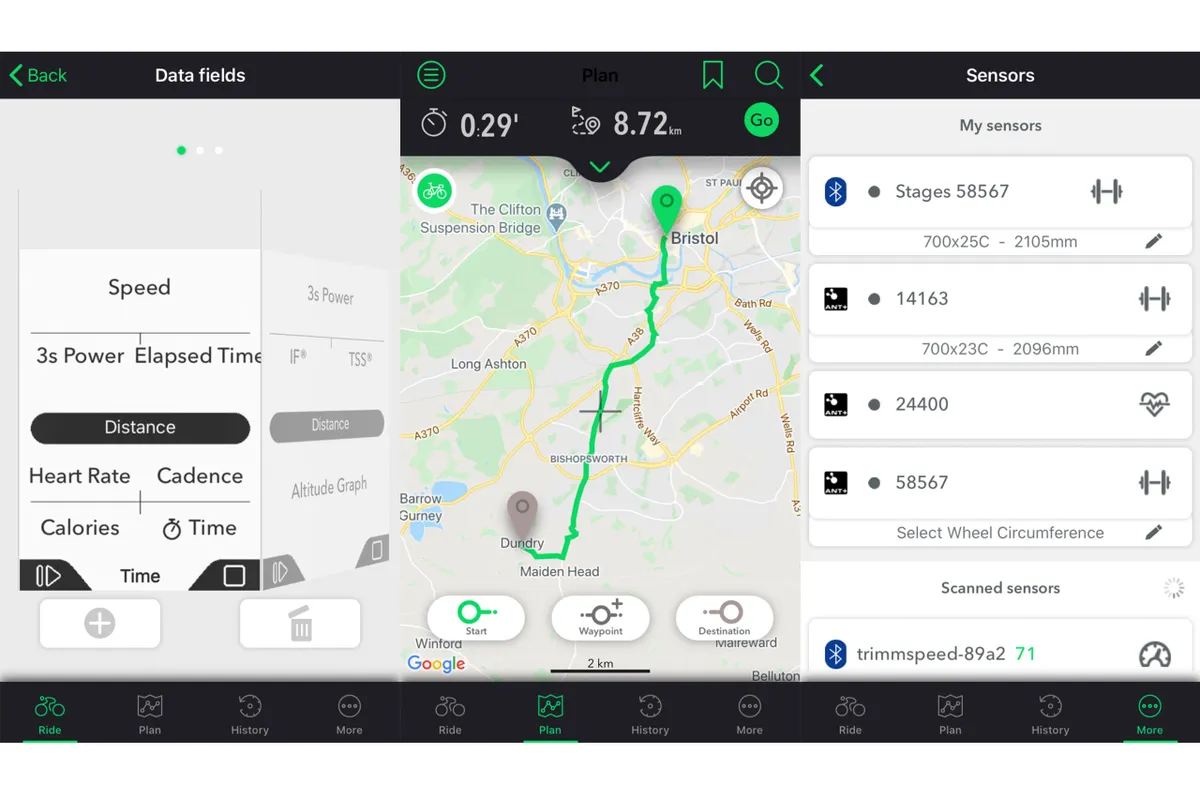
Routes can be planned in the app itself, with the ability to set up to 30 waypoints to ride between. The app, which uses OpenStreetMap maps on the ‘Ride’ page and Google Maps on the ‘Plan’ page, then calculates what it believes to be the optimum route between each point.
Trimm says it has put a lot of effort into the navigation functionality, saying it wanted the One to be as good as Google Maps is for cars, but for bikes.
The app also has the ability to download area maps to your smartphone, so you can navigate and generate new routes without a 4G signal, but you have to remember to do that in advance of your ride.
Planning a custom route in the app is both fast and simple. You just tap on the screen to drop waypoints. It's also possible to select between road, mountain and commuter bikes (via the small bike icon in the upper left of the navigation page) so that the app routes you on appropriate terrain.
Trimm told us that GPX files could be imported via the app, but the instruction manual doesn’t say how to do this and, so far, I can’t find a way. As previously mentioned, there's also no integration with apps such as Komoot, so currently the only way to use navigation on the One is via the Trimm Cycling app.
Rides can be viewed in the app or uploaded directly to Strava, but this has to be done manually for each ride – the app doesn’t sync to Strava automatically.
When I initially uploaded my ride data from the One to Strava it was incomplete. There was no GPX (mapping) data and there also appeared to be a lot of power drops and figures for average power and calories that seemed comically low (lower than half of what I would normally expect) compared to previous rides done on exactly the same terrain using a Garmin 810 to record the ride.
Fortunately, re-uploading these rides more recently (around a month after the rides took place) all of these issues appear to be fixed, except for calories burned, so it looks like Trimm has adjusted things.
As well as lowering the GPS sample rate when a speed sensor and smartphone are connected, the Trimm One also has a lower sample rate for power data (two second recording intervals), in order to reduce battery usage and lower file sizes.
Unfortunately, there’s currently no option to switch to recording at one second intervals, though Trimm did say it would add this feature to its development pipeline as a priority.
Garmin GPS cycle computers, for example, automatically switch to one second data recording intervals when a power meter is connected, and that’s an essential feature.
There’s not much point being able to connect a power meter if you’re only getting 50 per cent of the data. If you just wanted a rough estimate of your power figures, services such as Strava can offer that for free.
It's also possible the lower sampling rate for GPS data may have an effect on Strava segment times too. Because of the way Strava calculates segment matches, it's possible to miss out on segments where the One doesn't record a GPS data point at the moment you pass through the start or end points, similar to GPS drift.
A GPX file (which contains the map data) can be exported from the Trimm Cycling app manually, but the only other option for exporting ride data is via Strava. Since there's no easy way to quickly batch export files from Strava (other than to request an archive of all of your data in one big download) this can make for an awkward and potentially time consuming process if you end up with lots of files to manage.
Fortunately, these are issues that can likely be fixed with a firmware update, but until then they will almost certainly be dealbreakers for anyone who rides with a power meter.
Trimm One GPS battery life
Plugged into the mains, Trimm says the One will charge fully (from zero per cent to 100 per cent charge) in around four hours using the included USB charging lead.
Without the optional sensors, battery life appears to be in line with the 15 hours claimed by Trimm.
Plugging the solar panel in sees the device begin to charge steadily even on a changeable day.
One minor concern is that the length of cord to the solar panel is very short, which limits placement options. You may need to reorganise your other accessories to make room for it.
It also only mounts on curved surfaces, so if you have a flat topped stem or aero handlebars it might not fit.
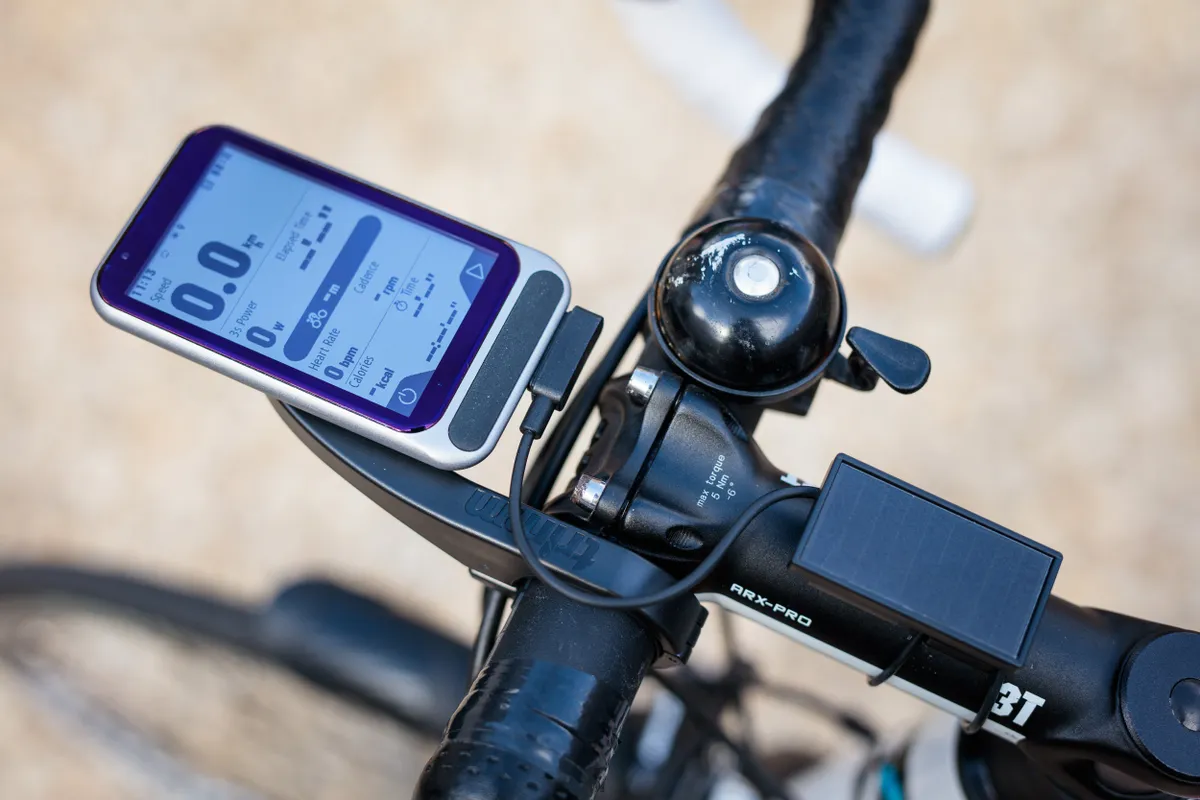
Riding with the speed sensor, solar panel and a smartphone connected, the Trimm stayed at 100 per cent charge for the first half of a sunny, spring ride (until I had a problem with the out-front mount and had to put the whole setup in my pockets – more on that later).
This indicates that if there’s enough sunlight the solar panel can genuinely keep the Trimm One charged during normal use. It’s very impressive given how small the solar panel is.
In terms of the demand on your smartphone’s battery, Trimm says that since the One communicates via low energy Bluetooth, it shouldn’t drain your battery very much at all.
My iPhone 6S battery dropped about 20 per cent during a two and a half hour ride when connected to the Trimm One and using navigation. This might sound like a fair amount, but the battery in that phone rarely lasts a full day anymore.
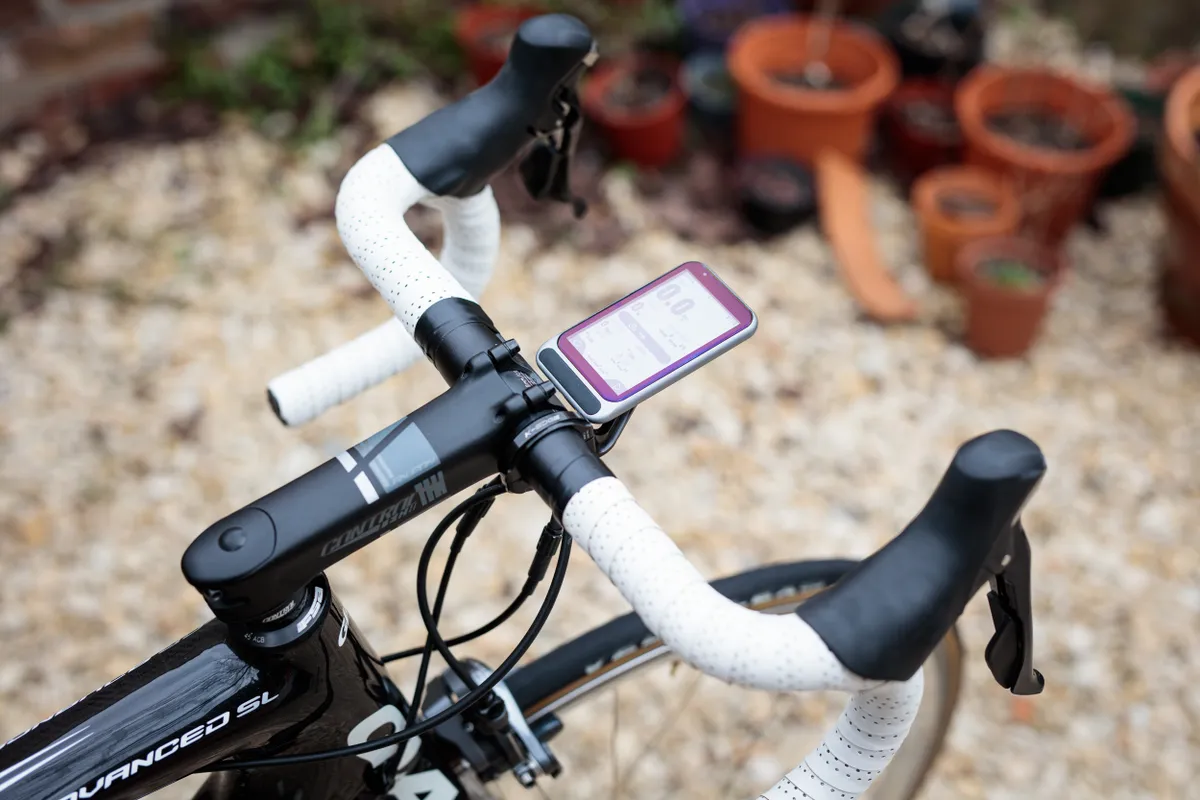
The real issue is having a GPS cycle computer that can seemingly keep chugging indefinitely but relies so heavily on another device (your smartphone) that cannot.
The likelihood is that the Trimm One’s battery will be able to vastly outlast any smartphone on the market, but without a smartphone its feature set is so limited that you can’t even use its key functions.
If the solar panel could also charge your phone, perhaps then it would make sense. As it is though, all that extra battery life feels wasted because you’re essentially just pegged to the battery life of your smartphone instead.
The 30 hours of battery life available when paired to a speed sensor, for example, is likely to be longer than most smartphone batteries, which makes the solar panel feel a little redundant.
It feels like a big missed opportunity. The solar panel could be a godsend for touring/adventure cyclists going on epic multi-day rides in remote locations, where opportunities to charge electronic devices might be few and far between.
The functional reliance on a smartphone though, which are arguably notorious for running out battery quickly, seems to completely undermine this.
Trimm One GPS extras
As well as the speed sensor and solar charging panel, Trimm ships the One with a couple of other accessories in the box.
As already mentioned, there’s an out-front mount, plus a USB charging cable, which attaches magnetically. A plug isn’t included, so you’ll need to supply your own or charge via USB on another device such as a laptop.
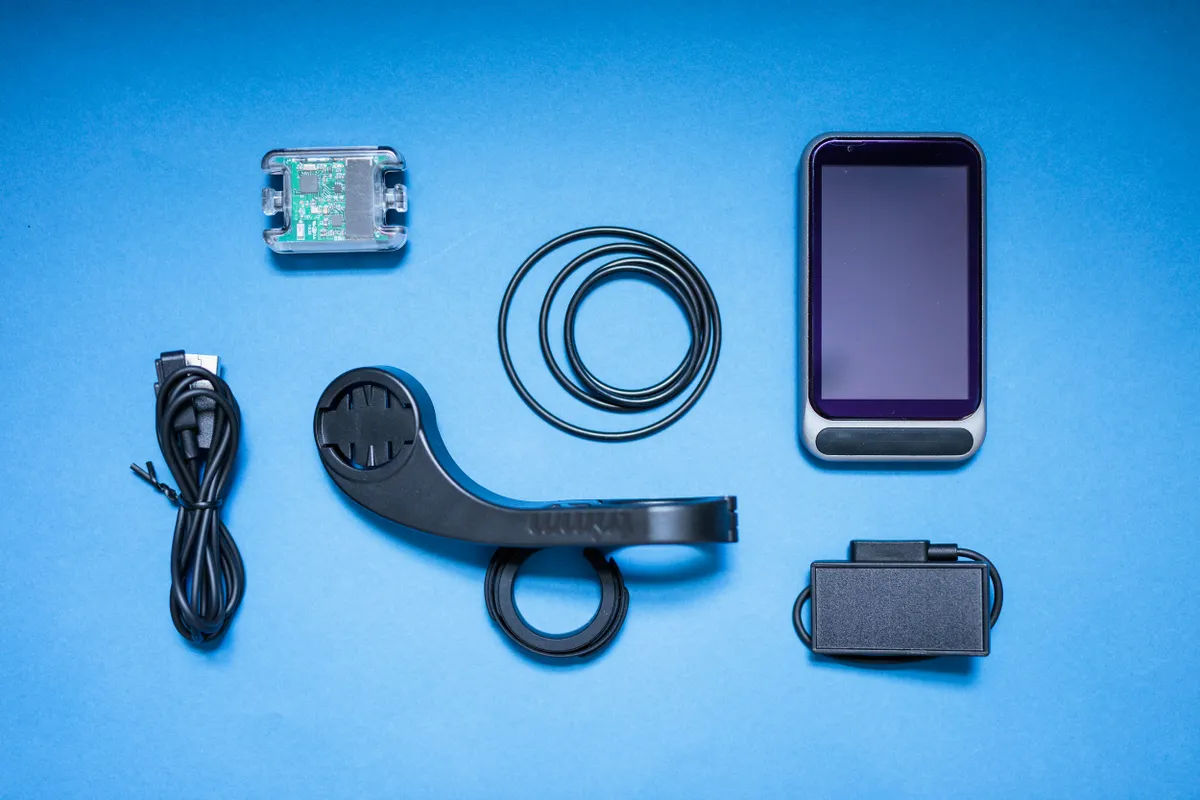
I’m not a fan of the included out-front mount, though. My first impressions of it were that it looks and feels a little cheap, especially compared to the device itself.
On my very first ride outside with the whole setup, the bolt holding the mount on the handlebar worked its way loose and fell out while I was riding.
The One caught the wind and the mount, which has a hinge closure, flipped rearwards. Luckily, my gear/brake cables held the bottom of the mount on the handlebars, otherwise the whole setup might have ended up on the floor as well.
Needless to say, I wasn’t able to find the 2.5mm Allen bolt on the road and had to put everything in my jersey pockets for the rest of the ride. I’d been riding on some rough roads, but it wasn’t Paris-Roubaix.
Happily, the quarter-turn mount on the rear of the One is compatible with standard Garmin mounts, so there’s a ready supply of alternative options on the market for road and mountain bikes, and many cyclists may already own a compatible mount anyway.

Trimm One GPS summary
As you can probably guess, I have mixed feelings about the Trimm One.
The complete reliance on smartphone integration seems like an odd choice, given it’s aimed at touring cyclists who may not be able to regularly charge their smartphones. The feature set of both the One and the Trimm Cycling app are also limited compared to the (cheaper) competition.
It does do some things well though. It looks smart, especially on its own, and the screen is good quality and easy to read.
The solar charging panel is also genuinely impressive. In many ways, it’s the star of the show. It just works and the combination of the speed sensor, smartphone connection and solar charging panel really does work as advertised. It’s a shame the smartphone integration seems to undermine its usefulness.
For the Trimm One to be a genuine contender to the likes of Garmin or Wahoo, it would need to offer something closer to the feature sets of those computers.
It's great Trimm is continuing to bring out fixes and new features, but at the moment the package as a whole feels a little unfinished.
Cyclists without a need for ultimate accuracy and a smartphone with a great battery may find the slimmed down feature set acceptable and the solar panel to be extremely useful. However, those who train with a power meter or are serious Strava users may find it too limiting as things currently stand.
Product
| Brand | trimm |
| Price | 462.00 AUD,275.00 EUR,240.00 GBP,299.00 USD |
| br_whatWeTested | GPS and Trimm Cycling app |
| Weight | 63.0000, GRAM () - Actual weight |
Features
| br_stravaLiveSegments | no |
| br_rechargeableBattery | yes |
| br_turnByTurnNavigation | yes |
| br_smartphoneNotifications | yes |
| br_screenType | black_and_white |
| br_connectivity | antPlus |
| br_connectivity | bluetooth |
| br_maps | Yes, on Trimm Cycling app |
| br_dimensions | 55 x 94 x 12.5 (mm) |
| br_batteryLife | 15 hours / 50 with speed sensor / Potentially unlimited with with solar charging panel and speed sensor |
| br_waterResistance | Trimm claims the One is ‘water resistant’, but it has not received a formal rating. |
| br_screenDimensions | 3.2" |
| br_displayResolution | 200 dpi |
| br_sensorCompatibility | Bluetooth, ANT+ |
